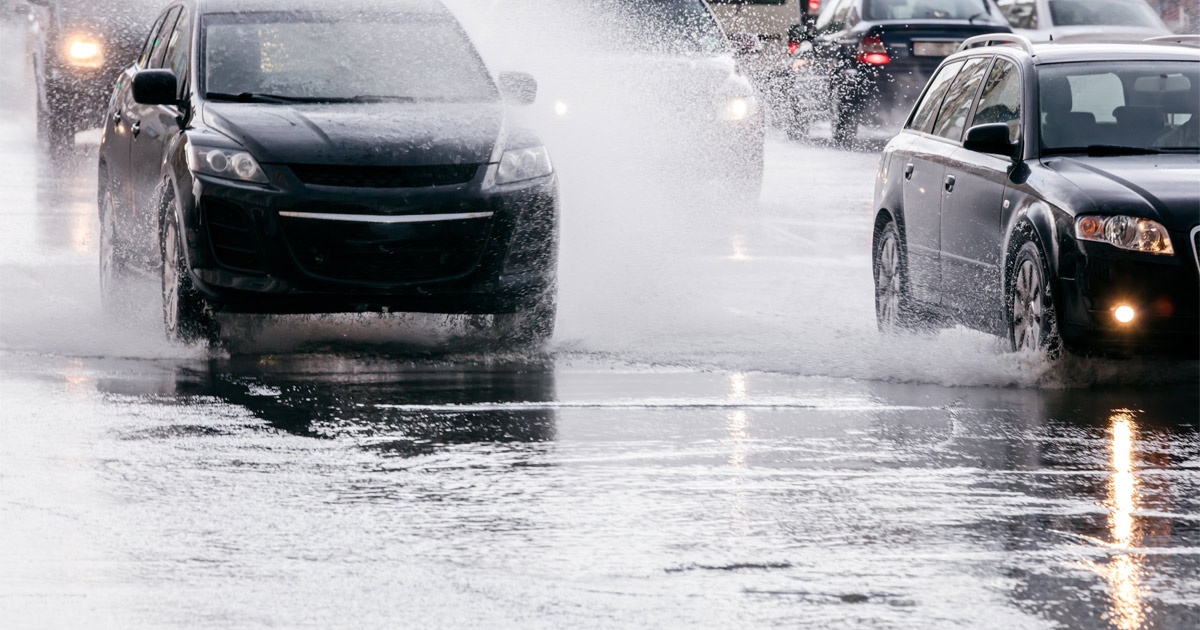With heavy downpours, hurricanes, and low-lying areas, flooding is a potentially life-threatening hazard many drivers encounter. Knowing how to navigate floodwaters is essential to the safety of yourself, your passengers, and other drivers on the road.
Here are some valuable tips on how to drive safely in rainy conditions.
- Stay informed: Check the weather forecast and road conditions before leaving. If you know that heavy rain or flooding is expected, consider postponing your trip if unnecessary. Planning can help you avoid getting caught in dangerous situations.
- Turn around: For your safety, it is essential to understand that just a few inches of water can be enough to stall your car, and a foot of water can float most vehicles. Avoid driving through flooded roads whenever possible, as it is almost impossible to determine the water’s depth and currents.
- Obey warnings: Authorities close roads or issue flood warnings for a reason. Disregarding these warnings not only endangers your life but also risks the lives of emergency responders who may have to rescue you. Always respect road closures and detours.
- Plan your route: If you must drive in flood-prone areas, plan your route carefully. Choose high ground and main roads whenever possible. Avoid underpasses and low-lying areas that are more likely to flood quickly.
- Maintain a safe distance: When driving in heavy rain or flood conditions, maintain a safe following distance from the vehicle in front of you. Reduced visibility and wet roads can increase stopping distances. Giving yourself extra space can help prevent accidents.
- Avoid puddles: Avoid driving through puddles or water-covered areas, even if they seem shallow. Judging the depth accurately is impossible, and hidden obstacles or potholes can damage your vehicle or cause it to stall.
- Do not use cruise control: Turn off your cruise control when driving in wet or flood-prone areas. Cruise control can make it harder to react quickly to changing road conditions, such as hydroplaning, when the tires skid over the water.
- Use your lights: Turn on your headlights when driving in heavy rain or low visibility. This helps you see better and makes your vehicle more visible to other drivers.
- Drive slowly: Reduce speed when driving through waterlogged streets or flooded areas. Driving too fast can create a wake that may flood nearby properties or cause hydroplaning. Drive at a pace that allows you to maintain control of your vehicle.
- Stay calm: If you are driving through the rain and your tires start to skid, stay calm and turn in the direction you want to go while releasing the gas.
Understanding the accident risks, staying informed, and exercising caution is essential to safe driving during heavy rains and flooding. Always prioritize your safety and the safety of others on the road. If you can avoid driving through floodwaters altogether, that is the best choice.
Contact Our Atlantic City Car Accident Lawyers at D’Amato Law Firm if You Have Been Involved in a Flood-Related Accident
Driving through heavy downpours and flooded areas can lead to a car accident. Contact our Atlantic City car accident lawyers at D’Amato Law Firm for legal help after a car wreck. Call us at 609-926-3300 or fill out our online form for a free consultation. Located in Egg Harbor Township, New Jersey, we assist clients in South Jersey, including Atlantic City, Linwood, Galloway Township, Cape May, Vineland, Millville, Bridgeton, Ocean City, and Woodbury.


